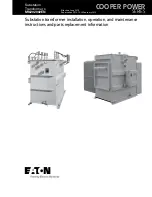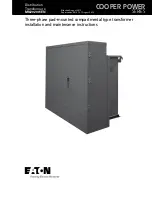
28
Reference Manual
00809-0100-4022, Rev GA
September 2016
3.5
Installation procedures
For dimensional drawing information refer to
Appendix A: Specification and Reference Data
3.5.1
Zero and span target orientation
Mount the transmitter with sufficient clearance so the zero and span targets are accessible.
3.5.2
Mount the transmitter
Panel mount
Electrical connection
1.
Pull the leads through the threaded mounting hole in the panel wall.
2.
Hand tighten the electrical connection into the mounting hole.
3.
Using a wrench on the hex flat at the process connection, apply sufficient torque to
prevent transmitter vibration. Do not exceed 100 ft-lbs.
Process connection
1.
Hand tighten the appropriate sized impulse piping into the process connection.
2.
Using a wrench on the hex flat at the impulse piping connection, apply enough
torque to prevent the process fluid from leaking. Do not exceed 100 ft-lbs.
Note
Apply torque only to the hex flat located at the process end of the transmitter. Do not apply
torque to the transmitter body or electrical connection - severe damage could result. Do
not exceed 100 ft-lbs.
Note
Integral conduit seal meets the requirements of NEC
®
2002 section 501:5 (A) and 501.5 (B).
No additional conduit seal is required.
Note
The Rosemount
™
4600 Oil & Gas Pressure Transmitter features a reliable dual process seal
design which meets the requirements of NEC 2002 section 501:5 (F)(3) and API 14F 6.8.2.2.
No additional process sealing is required.
Impulse piping
The piping between the process and the transmitter must accurately transfer the pressure
to obtain accurate measurements. There are five possible sources of error: pressure
transfer, leaks, friction loss (particularly if purging is used), trapped gas in a liquid line and
liquid in a gas line.
See
for complete warning information.
Aotewell Ltd
www.aotewell.com
Industry Automation
HongKong|UK|China
+86-755-8660-6182
















































